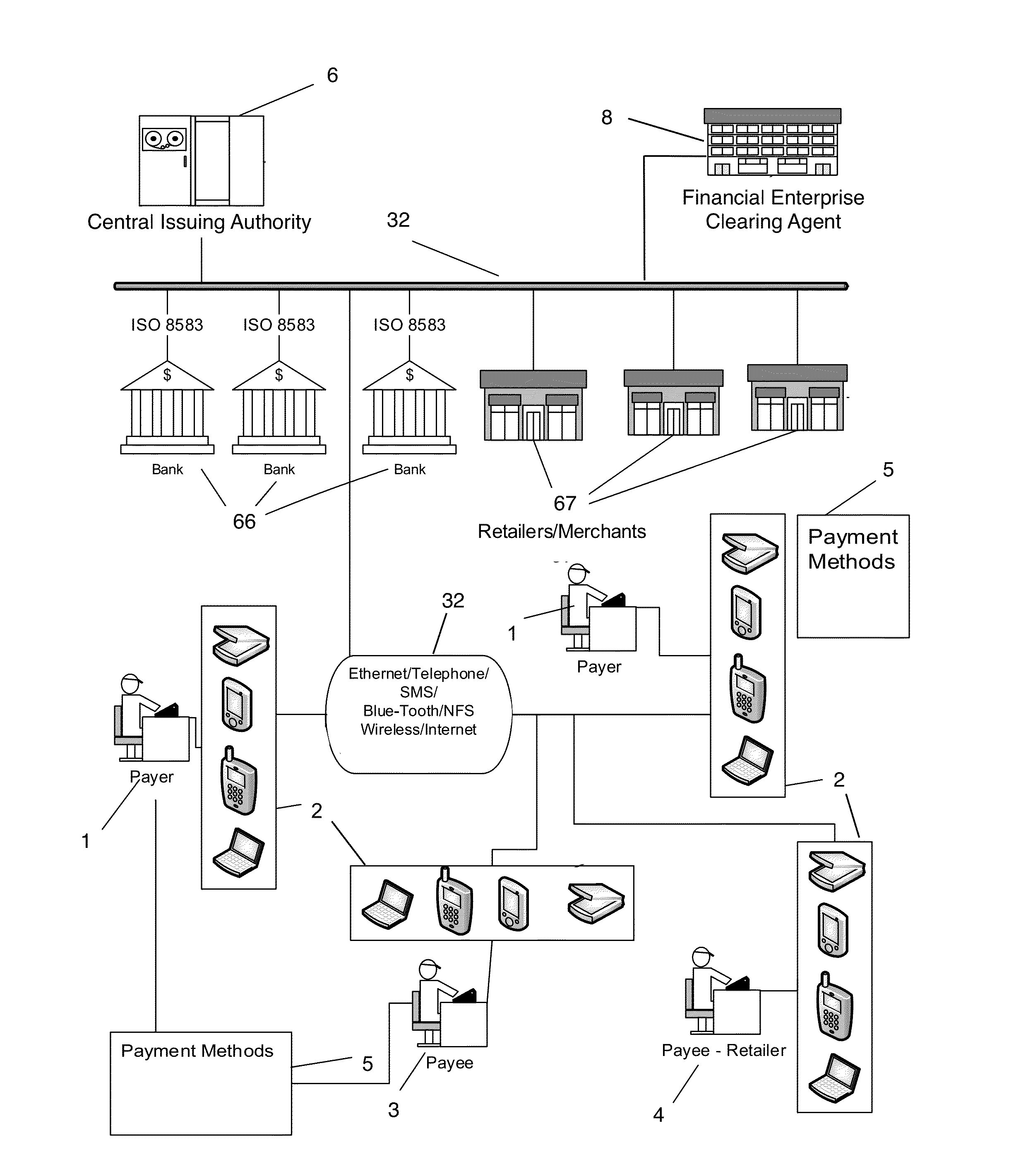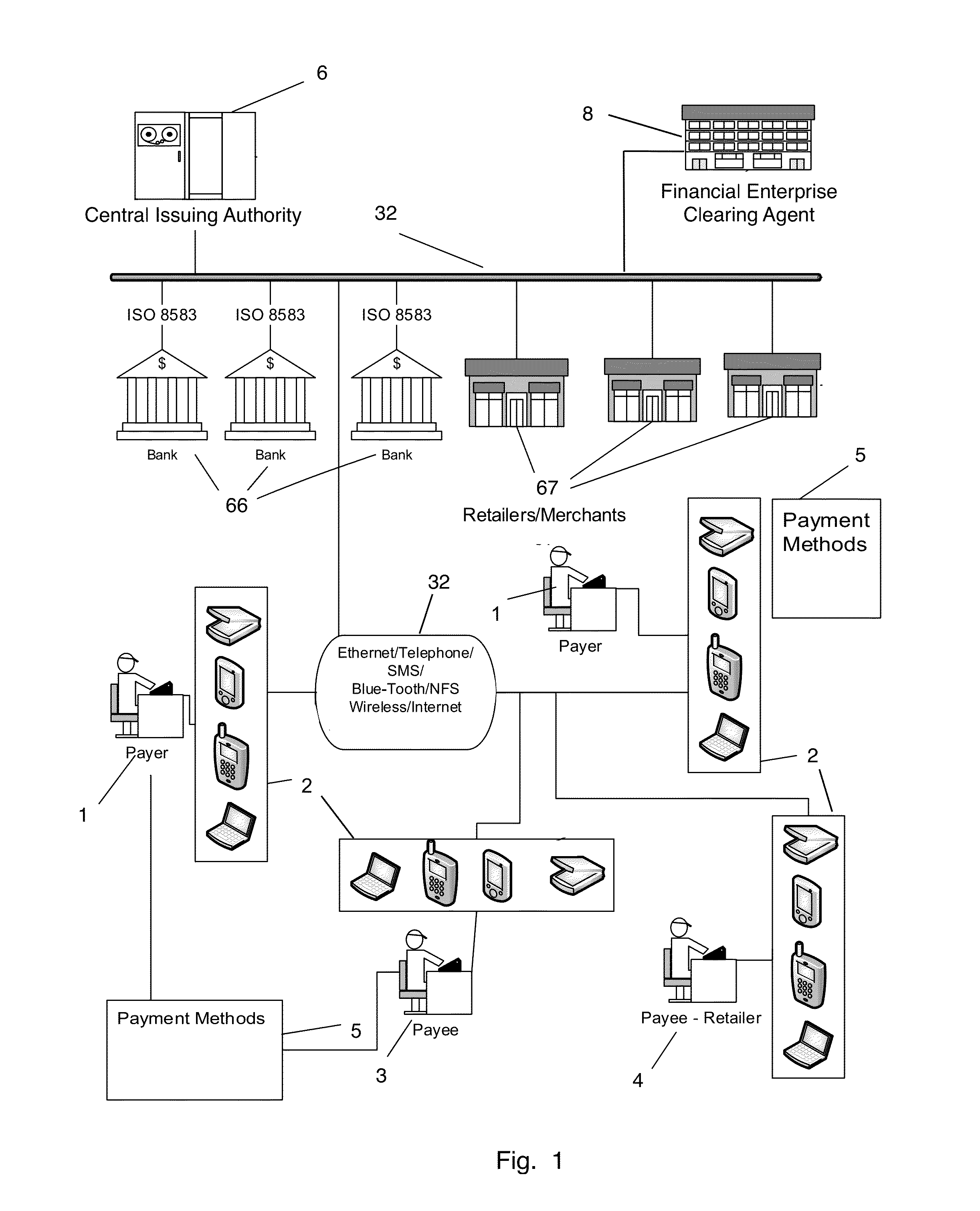Electronic payment and authentication system
a technology applied in the field of electronic payment and authentication system, can solve the problems of limited use, loss of control over the money it contains, unattractive for many people, etc., and achieve the effects of enhancing wireless payment, facilitating digital payment, and improving user identification
- Summary
- Abstract
- Description
- Claims
- Application Information
AI Technical Summary
Benefits of technology
Problems solved by technology
Method used
Image
Examples
Embodiment Construction
[0041]In the context of the present disclosure, the terms “issuance check” and “payment check” and “electronic check”, as well as “internet check”, are used interchangeably; the terms “issuance card” and “payment card” and “electronic card”, as well as “internet card”, are used interchangeably; the terms “Payer” and “Participant” are used interchangeably to designate a participant payer that pays with an electronic check or electronic credit / debit card; and the terms “Payee” and “Retailer / Merchant” are used interchangeably to designate a participant payee that gets paid with an electronic check or electronic credit / debit card. In the context of the present disclosure, the terms “Credit Card” and “Debit Card”, are used interchangeably, as the invention operates in the same manner for both types of card.
[0042]The invention provides, in general, a system for making monetary payments between participant payers and payees. The system comprises at least one Central Issuing Authority (CIA)...
PUM
 Login to View More
Login to View More Abstract
Description
Claims
Application Information
 Login to View More
Login to View More - R&D
- Intellectual Property
- Life Sciences
- Materials
- Tech Scout
- Unparalleled Data Quality
- Higher Quality Content
- 60% Fewer Hallucinations
Browse by: Latest US Patents, China's latest patents, Technical Efficacy Thesaurus, Application Domain, Technology Topic, Popular Technical Reports.
© 2025 PatSnap. All rights reserved.Legal|Privacy policy|Modern Slavery Act Transparency Statement|Sitemap|About US| Contact US: help@patsnap.com



